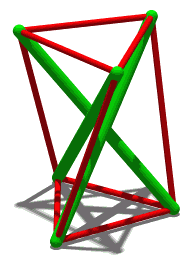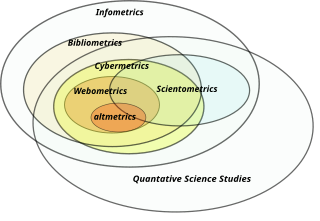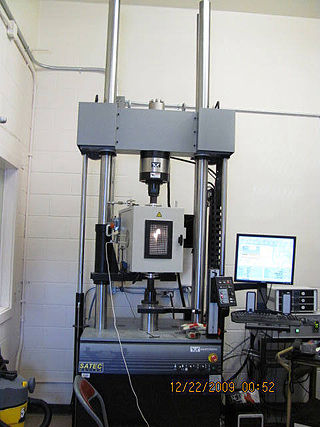Related Research Articles

Richard Buckminster Fuller was an American architect, systems theorist, writer, designer, inventor, philosopher, and futurist. He styled his name as R. Buckminster Fuller in his writings, publishing more than 30 books and coining or popularizing such terms as "Spaceship Earth", "Dymaxion", "ephemeralization", "synergetics", and "tensegrity".

A design is a concept of or proposal for an object, a process, or a system. Design refers to something that is or has been intentionally created by a thinking agent, though it is sometimes used to refer to the nature of something – its design. The verb to design expresses the process of developing a design. In some cases, the direct construction of an object without an explicit prior plan may also be considered to be a design. A design is expected to have a purpose within a certain context, usually has to satisfy certain goals and constraints, and to take into account aesthetic, functional, economic, environmental or socio-political considerations. Typical examples of designs include architectural and engineering drawings, circuit diagrams, sewing patterns and less tangible artefacts such as business process models.

Software architecture is the set of structures needed to reason about a software system and the discipline of creating such structures and systems. Each structure comprises software elements, relations among them, and properties of both elements and relations.

Tensegrity, tensional integrity or floating compression is a structural principle based on a system of isolated components under compression inside a network of continuous tension, and arranged in such a way that the compressed members do not touch each other while the prestressed tensioned members delineate the system spatially.

Information science is an academic field which is primarily concerned with analysis, collection, classification, manipulation, storage, retrieval, movement, dissemination, and protection of information. Practitioners within and outside the field study the application and the usage of knowledge in organizations in addition to the interaction between people, organizations, and any existing information systems with the aim of creating, replacing, improving, or understanding the information systems.
An information system (IS) is a formal, sociotechnical, organizational system designed to collect, process, store, and distribute information. From a sociotechnical perspective, information systems are composed by four components: task, people, structure, and technology. Information systems can be defined as an integration of components for collection, storage and processing of data of which the data is used to provide information, contribute to knowledge as well as digital products that facilitate decision making.
A design engineer is an engineer focused on the engineering design process in any of the various engineering disciplines and design disciplines like Human-Computer Interaction. Design engineers tend to work on products and systems that involve adapting and using complex scientific and mathematical techniques. The emphasis tends to be on utilizing engineering physics and other applied sciences to develop solutions for society.

Computer-aided architectural design (CAAD) software programs are the repository of accurate and comprehensive records of buildings and are used by architects and architectural companies for architectural design and architectural engineering. As the latter often involve floor plan designs CAAD software greatly simplifies this task.

Building science is the science and technology-driven collection of knowledge in order to provide better indoor environmental quality (IEQ), energy-efficient built environments, and occupant comfort and satisfaction. Building physics, architectural science, and applied physics are terms used for the knowledge domain that overlaps with building science. In building science, the methods used in natural and hard sciences are widely applied, which may include controlled and quasi-experiments, randomized control, physical measurements, remote sensing, and simulations. On the other hand, methods from social and soft sciences, such as case study, interviews & focus group, observational method, surveys, and experience sampling, are also widely used in building science to understand occupant satisfaction, comfort, and experiences by acquiring qualitative data. One of the recent trends in building science is a combination of the two different methods. For instance, it is widely known that occupants' thermal sensation and comfort may vary depending on their sex, age, emotion, experiences, etc. even in the same indoor environment. Despite the advancement in data extraction and collection technology in building science, objective measurements alone can hardly represent occupants' state of mind such as comfort and preference. Therefore, researchers are trying to measure both physical contexts and understand human responses to figure out complex interrelationships.
Design thinking refers to the set of cognitive, strategic and practical procedures used by designers in the process of designing, and to the body of knowledge that has been developed about how people reason when engaging with design problems.
Design science research (DSR) is a research paradigm focusing on the development and validation of prescriptive knowledge in information science. Herbert Simon distinguished the natural sciences, concerned with explaining how things are, from design sciences which are concerned with how things ought to be, that is, with devising artifacts to attain goals. Design science research methodology (DSRM) refers to the research methodologies associated with this paradigm. It spans the methodologies of several research disciplines, for example information technology, which offers specific guidelines for evaluation and iteration within research projects.

Ecological design or ecodesign is an approach to designing products and services that gives special consideration to the environmental impacts of a product over its entire lifecycle. Sim Van der Ryn and Stuart Cowan define it as "any form of design that minimizes environmentally destructive impacts by integrating itself with living processes." Ecological design can also be defined as the process of integrating environmental considerations into design and development with the aim of reducing environmental impacts of products through their life cycle.
Synergetics is the empirical study of systems in transformation, with an emphasis on whole system behaviors unpredicted by the behavior of any components in isolation. R. Buckminster Fuller (1895–1983) named and pioneered the field. His two-volume work Synergetics: Explorations in the Geometry of Thinking, in collaboration with E. J. Applewhite, distills a lifetime of research into book form.

Generative design (GD) is an iterative design process that generates outputs that meet specified constraints to varying degrees. In a second phase, designers can then provide feedback to the generator that explores the feasible region by selecting preferred outputs or changing input parameters for future iterations. Either or both phases can be done by humans or software. One method is to use a generative adversarial network, which is a pair of neural networks. The first generates a trial output. The second provides feedback for the next iteration.
The Function-Behaviour-Structure ontology – or short, the FBS ontology – is an ontology of design objects, i.e. things that have been or can be designed. The Function-Behaviour-Structure ontology conceptualizes design objects in three ontological categories: function (F), behaviour (B), and structure (S). The FBS ontology has been used in design science as a basis for modelling the process of designing as a set of distinct activities. This article relates to the concepts and models proposed by John S. Gero and his collaborators. Similar ideas have been developed independently by other researchers.

Vijay Kumar Vaishnavi is a noted researcher and scholar in the computer information systems field with contributions mainly in the areas of design science, software engineering, and data structures & algorithms, authoring over 150 publications including seven books in these and related areas, and co-owning a patent. He is currently Professor Emeritus at the Department of Computer Information Systems, Georgia State University. He is Senior Editor Emeritus of MIS Quarterly and is on the editorial boards of a number of other major journals. His research has been funded by the National Science Foundation (NSF) as well as by the industry.
Systemic design is an interdiscipline that integrates systems thinking and design practices. It is a pluralistic field, with several dialects including systems-oriented design. Influences have included critical systems thinking and second-order cybernetics. In 2021, the Design Council (UK) began advocating for a systemic design approach and embedded it in a revision of their double diamond model.
Citizen Design Science is the combination of Citizen Science and Design Science. Design Science is known since the early 1960s when Buckminster Fuller defined it as systematic designing, whereas half a decade later Herbert A. Simon saw it more as the study of the design process. The term Citizen Science emerged in the 1990s as work that citizens of all ages and backgrounds conduct under the guidance of scientists, collecting data or inventing processes or artefacts. A contemporary example is the Zooniverse platform that enables people to “contribute to real discoveries in fields ranging from astronomy to zoology”. Citizen Design Science is a combination of both concepts for urban systems: it adds the combination of human observation, cognition, experience and local knowledge into a scientific framework that improves the planning, design, management and transformation of buildings and cities. Design Science contributes the methods and instruments, Citizen Science adds data and inventions. Thus, Citizen Design Science bundles individual observations and inventions into a bottom up flow of data and information to improve the planning and functioning of a city. As such this concept is taught at ETH Zurich and online
The University of Sydney Design Lab, formerly the Key Centre of Design Computing and Cognition, is a teaching and research centre of the University's School of Architecture, Design and Planning, established in 1968. The aim of the centre is to apply human-centred design to products, services and systems.
Feminist HCI is a subfield of human-computer interaction (HCI) that applies feminist theory, critical theory and philosophy to social topics in HCI, including scientific objectivity, ethical values, data collection, data interpretation, reflexivity, and unintended consequences of HCI software. The term was originally used in 2010 by Shaowen Bardzell, and although the concept and original publication are widely cited, as of 2020 Bardzell's proposed frameworks have been rarely used since.
References
- ↑ Fuller, R. Buckminster (1957). "A Comprehensive Anticipatory Design Science". Royal Architectural Institute of Canada. 34. Retrieved 2016-09-14– via Google Books.
- ↑ Fuller, R. Buckminster (1957). "Comprehensive Anticipatory Design Science". Royal Architectural Institute of Canada Journal. 34 (9). J. F. Sullivan: 357–361. hdl:10222/74680.
- ↑ Fuller, R. Buckminster. "Fuller on Design Science". Buckminster Fuller Institute. Archived from the original on 2021-10-23. Retrieved 2016-09-15.
- ↑ "Design Science | Cambridge Core".
- ↑ Gregory, Sydney (1966). The Design Method. UK: Butterworth.
- ↑ Cross; Naughton, Walker (1981). "Design method and scientific method". 2 (4). Design Studies: 195–201.
{{cite journal}}: Cite journal requires|journal=(help) - ↑ Willem (1990). "Design and Science". Design Studies. 11 (1). Butterworth and Co.: 43–47. doi:10.1016/0142-694X(90)90013-3. S2CID 108568620.
- ↑ Cross (2001). "Designerly Ways of Knowing: Design Discipline versus Design Science" (PDF). Design Issues. 17 (3): 49–55. doi:10.1162/074793601750357196. S2CID 17912382.
- ↑ Gero (2004). The PhD Program in Design Science at the University of Sydney, Development and Prospects of PhD Programme in Design Science Education. Chaoyang University of Technology, Taiwan.
- ↑ Simon, Herbert A. The Sciences of the Artificial, MIT Press.
- ↑ Baldwin; Clarke (2000). Design Rules, Vol. 1: The Power of Modularity. MIT Press. ISBN 978-0-262-02466-2.
- ↑ Banathy (1996). Designing Social Systems in a Changing World. Plenum, New York. ISBN 978-0-306-45251-2.
- ↑ Long; Dowell (1998). Conceptions of the discipline of HCI: Craft, applied science, and engineering. Cambridge University Press.
- ↑ Romme, A. Georges L. (October 2003). "Making a Difference: Organization as Design". Organization Science. 14 (5): 558–573. doi:10.1287/orsc.14.5.558.16769.
- ↑ Van Aken (2004). "Management research based on the paradigm of the design sciences: The quest for field-tested and grounded technological Rules". Journal of Management Studies.
- ↑ Warfield (1990). "A Science of Generic Design". Intersystems Publishers.
{{cite journal}}: Cite journal requires|journal=(help) - ↑ Cross, Nigel (2007). "Forty years of design research". Design Studies. 28 (1): 1–4. doi:10.1016/j.destud.2006.11.004.
- ↑ Farrell, R. and C. Hooker (2012) 'The Simon—Kroes model of technical artifacts and the distinction between science and design', Design Studies, 33 (5) pp. 480-495 https://dx.doi.org/10.1016/j.destud.2012.05.001
- ↑ Galle, P. and P. Kroes (2014) 'Science and design. Identical twins?' Design Studies, 35 (3) pp. 201-231 https://dx.doi.org/10.1016/j.destud.2013.12.002
- ↑ Suh (1990). The Axiomatic Theory of Design. Oxford University Press. ISBN 978-0-19-504345-7.
- ↑ Gero, John (1990). "Design prototypes: a knowledge representation schema for design". AI Magazine. 11 (4): 26. doi:10.1609/aimag.v11i4.854. S2CID 11350025.
- ↑ Gero (2004). "The situated function-behaviour-structure framework". Design Studies. 25 (4). Butterworth and Co.: 373–391. doi:10.1016/j.destud.2003.10.010.
- ↑ Aburamadan, Rania; Trillo, Claudia (March 2020). "Applying design science approach to architectural design development". Frontiers of Architectural Research. 9 (1): 216–235. doi:10.1016/j.foar.2019.07.008.
- ↑ Zeng, Y.; Gu, P. (August 1999). "A science-based approach to product design theory Part I: formulation and formalization of design process". Robotics and Computer-Integrated Manufacturing. 15 (4): 331–339. doi:10.1016/S0736-5845(99)00028-9.
- 1 2 Hevner; Chatterjee (2010). Design Research in Information Systems. Springer. ISBN 978-1-4419-5652-1.
- ↑ Aparicio, J.T.; Aparicio, M.; Costa, C.J. (2023). "Design Science in Information Systems and Computing". In Anwar, S.; Ullah, A.; Rocha, Á.; Sousa, M.J. (eds.). Proceedings of the International Conference on Information Technology and Applications. Lecture Notes in Networks and Systems. Vol. 614. Springer, Singapore. doi:10.1007/978-981-19-9331-2_35.
- ↑ Vaishnavi, V. and Kuechler, W. (2004/21). "Design Science Research in Information Systems" January 20, 2004; last updated November 21, 2021. URL: http://desrist.org/design-research-in-information-systems
- ↑ Österle, H., Becker, J., Frank, U., Hess, T., Karagiannis, D., Krcmar, H., Loos, P., Mertens, P., Oberweis, A. and Sinz, E.J. (2010). "Memorandum zur gestaltungsorientierten Wirtschaftsinformatik". Zeitschrift für betriebswirtschaftliche Forschung. 62 (6): 664–672.
{{cite journal}}: CS1 maint: multiple names: authors list (link) - ↑ Österle, Hubert; Becker, Jörg; Frank, Ulrich; Hess, Thomas; Karagiannis, Dimitris; Krcmar, Helmut; Loos, Peter; Mertens, Peter; Oberweis, Andreas; Sinz, Elmar J (January 2011). "Memorandum on design-oriented information systems research". European Journal of Information Systems. 20 (1): 7–10. doi:10.1057/ejis.2010.55. S2CID 3471461.
- ↑ Baskerville, Richard; Lyytinen, Kalle; Sambamurthy, Vallabh; Straub, Detmar (January 2011). "A response to the design-oriented information systems research memorandum". European Journal of Information Systems. 20 (1): 11–15. doi:10.1057/ejis.2010.56. S2CID 16653089.
- ↑ Hevner; Salvatore T. March; Jinsoo Park; Sudha Ram (2004). "Design science in information systems research". MIS Quarterly. 28 (1): 75–105. doi:10.2307/25148625. JSTOR 25148625.
- ↑ Wieringa (2009). Design Science as nested problem solving. 4th International Conference on Design Science Research in Information Systems and Technology.
- ↑ Peffers; Tuunanen, Gengler; Rossi, Hui; Virtanen, Bragge (2006). "The Design Science Research Process: A Model for Producing and Presenting Information Systems Research" (PDF). springer.[ permanent dead link ]
- ↑ Adams (2013). "The Advanced Data Acquisition Model (ADAM): A process model for digital forensic practice" (PDF). Murdoch University.